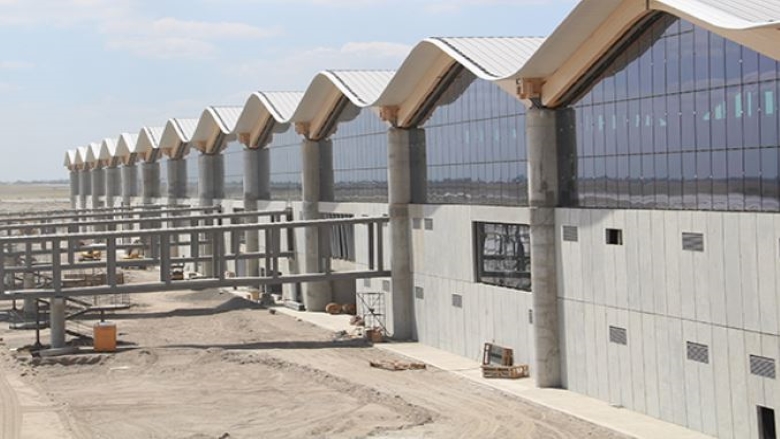Challenge
The Philippines’ Greater Capital Region (GCR) of Metro Manila and its surrounding provinces is the economic core of the country with a third of its GDP. The GCR is served by the Ninoy Aquino International Airport (NAIA), the country’s premiere gateway, which in 2015 accounted for 72 percent of all international visitor arrivals in the Philippines. By 2015, following a decade of average annual growth in air traffic of 9.8 percent, NAIA was running at 20 percent over its terminal design capacity and 8 percent over its runway and apron capacity. These constraints led to frequent flight delays and diversion to Clark International Airport, approximately 90 km away from Metro Manila’s city center, and cancellations leading to significant costs to airlines and passengers. Overall, there was poor quality of service and inefficiencies. NAIA’s capacity constraints hampered the country’s trade and economic growth potential as it was unable to keep pace with the increase of air traffic services.
Approach
In 2016, the government owned corporation Bases Conversion Authority (BCDA), appointed the IFC, with the support of the GIF, to act as the lead advisor to modernize Clark International Airport through an innovative hybrid PPP scheme to become the second airport gateway of the GCR. The hybrid PPP involves (1) an engineering, procurement and construction (EPC) contract to design and construct the shell of a new terminal building and (2) a 25-year operations and maintenance (O&M) contract that included the fitting-out of the terminal.
Key challenges were (1) to design the hybrid PPP structure to include a competitive bidding process to identify parties for each of the EPC and O&M contracts and (2) to minimize the interface risks between the EPC contract and the O&M contractor through well-defined contractual arrangements, with measures to mitigate risks arising from the obligations of each party including upfront capital expenditures and life-cycle investments required through the operations and maintenance period.
Results
The commercial close of the EPC component was achieved in December 2017 and that of the O&M component in January 2019. The GIF funded a structuring activity that enabled the IFC to conduct due diligence of the legal, technical, financial/commercial, and environmental and social issues of the project, structuring the EPC and O&M contracts based on the findings of the due diligence, and the preparation of bidding documents to implement a transparent and competitive tender process. Construction of the new terminal under EPC PPP started in 2018.
Under the project, a new 100,000 square meter passenger terminal will be constructed by 2021 to boost air transport capacity for the GCR. The new Clark International Airport terminal is expected to serve nearly 8 million passengers annually by 2021, four times its current capacity of 2 million and reduce the strain on NAIA. The globally recognized airport operator Changi International Airports was selected through the competitive O&M tender process, to ensure quality service delivery and boost traffic connectivity throughout the Philippines, as well as to the region and the rest of the world.
The modernization of the airport is expected to have a significant impact on the development of Clark’s own catchment area, a fast growing region with several industrial economic zones, including a new township that is being planned at a 9,000+ hectare area in New Clark City. The project is expected to create direct and indirect jobs and increase development in the economic center of Central Luzon.
Bank Group Contribution
The GIF Trust Fund (TF) funded, a Project Preparation and Structuring Activity, of $1,214,000 in 2017 that enabled the IFC to conduct due diligence of the legal, technical, financial/commercial, and environmental and social issues of the project, and based on the findings of the due diligence to structure the EPC and O&M contracts, and the preparation of bidding documents to implement a transparent and competitive tender process.
Partners
In 2016, the government owned corporation BCDA, appointed the IFC, with the support of the GIF, to act as the lead advisor to modernize Clark International Airport through an innovative hybrid PPP scheme. As the lead transaction advisor, IFC helped BCDA structure and tender both the EPC and O&M contracts. IFC also prepared the project documents and assisted BCDA in the conduct of the international open competitive tenders with support from GIF.
Moving Forward
This is the first airport project in the Philippines to be tendered under the Philippine government’s recent hybrid PPP policy.
Clark International Airport is the second main gateway into the country’s Greater Capital Region. Under the project, a new 100,000-square meter passenger terminal will be built by 2021, positioning the airport as a world-class facility and boosting air transport capacity for the Greater Capital Region and northern provinces of the country.
Private participation through PPPs has a critical role in reducing the infrastructure gap in the Philippines, especially in sectors that require technical expertise and innovative technologies. Success of the first PPP transaction in the airport sector will lead domestic and foreign investors to make traditional infrastructure projects competitive. The expansion of private participation will be expected and be a crucial step in the right direction towards achieving the government's ambitious infrastructure goal.
Beneficiaries
The new Clark International Airport terminal is expected to serve nearly 8 million passengers annually by 2021, four times its current capacity of 2 million and reduce the strain on Manila's NAIA. The project is expected to help create direct and indirect jobs and increase development in the economic center of Central Luzon.
Last Updated: Oct 21, 2020
